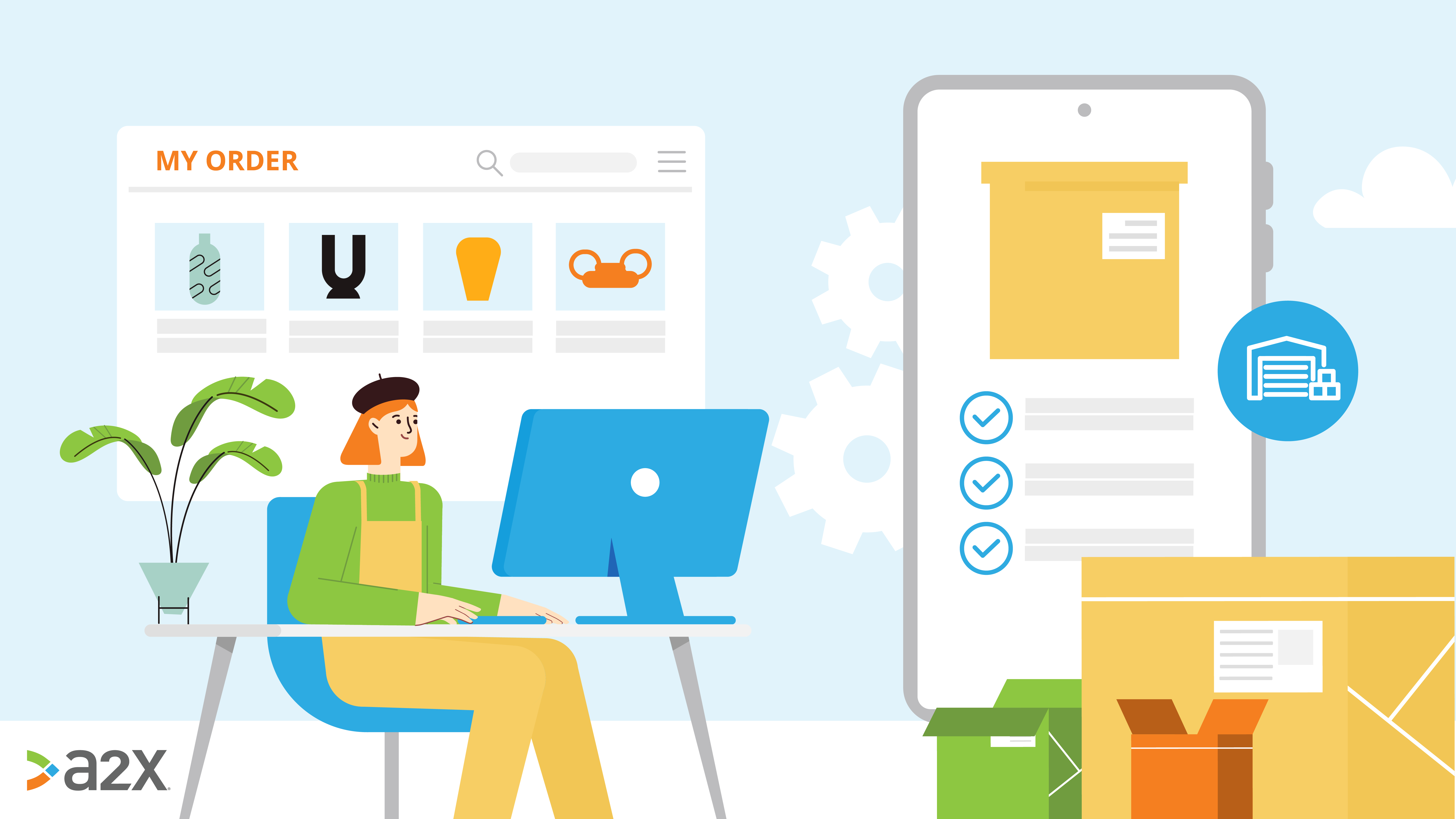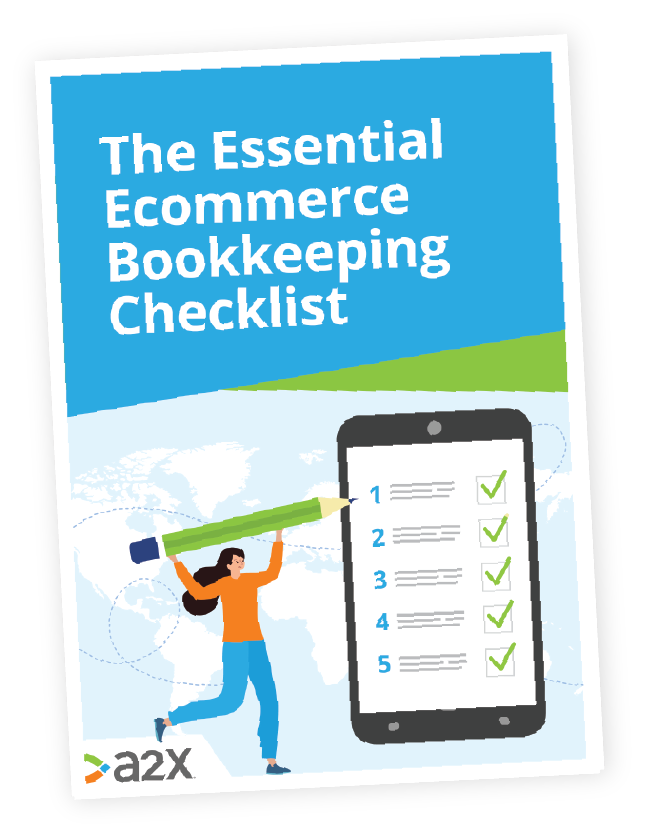
Ecommerce Accounting Explained: the Best Inventory Accounting Method (With Examples)

We want to make life easy for ecommerce sellers when it comes to their accounting. Download your own free ecommerce bookkeeping checklist so that you know what regular tasks you should be completing to run a resilient, profitable business.
The way you record your inventory impacts everything else in your business.
Your profits, your taxes, and the value of your business to name a few.
But there isn’t just one way to do it. And that’s what this guide is about.
Below, you’ll find the most common inventory accounting methods along with advice from Philip Oakley from ecommerce integration consultancy Outserve.
All quotes are his unless otherwise specified.
In this guide to inventory accounting, you’ll learn:
Table of Contents
Want to feel completely confident in your ecommerce bookkeeping?
Businesses that document their processes grow faster and make more profit. Download our free checklist to get all of the essential ecommerce bookkeeping processes you need every week, month, quarter, and year.
Download it here
What is inventory accounting and why is it important?
Knowing how much your stock is worth is crucial for your ecommerce business.
It helps you set your prices, manage your Cost of Goods Sold (COGS), and work out your tax obligations.
Good inventory accounting can even increase the value of your business.
And prices are always changing.
The cost of purchasing or manufacturing your inventory will fluctuate over time. And stock that sits in your warehouse can lose value as it gets older.
To run a profitable business, you’ll need to use the right accounting method for your inventory.
There are two key considerations for getting your inventory accounting right:
-
How you record inventory on your books.
-
How you work out the value of that inventory.
Let’s take a look at the ways you can record inventory in your accounts.
Cash vs accrual accounting and inventory
There are two main methods for doing your accounts: cash and accrual.
Cash is a simple place for ecommerce sellers to start. You can do it yourself with minimal software required. But it’s problematic for ecommerce businesses.
Things can get tricky when inventory enters the picture.
Cash accounting for inventory
In cash accounting, inventory goes straight on your income statement as an expense when you buy it. When you sell this inventory, it’s recorded as income.
It seems simple, but it can cause two major issues:
-
When you buy inventory, you’re actually swapping a cash asset for a physical asset. But using the cash accounting method doesn’t take this into account. So tracking its changing value to your business is much more difficult.
-
There’s no relationship between cost and sales. Each time you buy inventory, the total cost will hit your income statement at once. Your profits will appear to fluctuate greatly even if your sales are consistent.
Accrual accounting addresses these issues more effectively.
Accrual accounting and inventory
Accrual accounting records inventory as an asset on your balance sheet when you buy it.
When you sell it, the cost of the inventory that’s sold gets recorded as an expense on your income statement.
The value of your inventory then decreases by the same amount.
This means:
-
Cost of Goods Sold makes up a similar percentage of your income each month, resulting in more stable (and true to life) profits.
-
Your inventory appears on your balance sheet as the asset it is, with a clear value.
Companies of a certain size are required to use the accrual method of accounting because it offers greater clarity.
In a snapshot, a business owner can see the true performance and value.
Which accounting method should you use?
Accrual accounting is the gold standard for ecommerce sellers.
But it can be a big step.
Accrual is more time-consuming and complex than cash accounting. Especially if you’re new to the world of ecommerce.
If this sounds like you, you could look into a hybrid method that combines elements of cash and accrual.
Or you can check out our free bookkeeping checklist which explains the basics of accrual-based bookkeeping.
Inventory accounting: quantity and valuation
“Good inventory accounting needs two key elements. Quantity of stock and stock valuation.”
To work out how much your inventory is worth, you need to know how much you have.
How do you figure out the quantity of your stock?
Inventory management software can track this for you.
But the only way to really make sure is by physically counting your stock.
This is called an inventory count. Most businesses should do one every quarter.
This can be tricky for ecommerce sellers, who often have inventory spread across Third Party Logistics (3PL) companies or Amazon FBA warehouses, as well as in transit.
It’s a good idea to ask your 3PL if they offer a physical inventory count.
And think about whether you need to pause sales activities while you count your stock. You might be able to check different areas at different times to avoid a complete halt.
Once you know how much inventory you have, you can work out its value.
There are four main methods of doing this.
Inventory accounting: costing methods
“Changing the way you value your inventory can affect your profitability and asset value.”
There are four common ways of valuing your inventory: First In First Out (FIFO), Last In First Out (LIFO), Average Costing (AVCO), and Specific Identification.
Each one gives you a different way of assigning a cost price to stock.
You don’t have to sell your goods in the same order as your valuation method (unless you’re using Specific Identification. More on that later).
But you do need to use one method consistently, so it’s important to explore the options carefully.
Let’s take a look.
First In, First Out (FIFO)
“FIFO simply follows the natural flow of inventory.”
First In, First Out (FIFO) counts the oldest item in your inventory as the one you sell first.
FIFO is closest to the way most businesses already operate, especially when selling perishable items.
Pros of the FIFO method:
-
It’s logical and easy to understand.
-
It’s simple to use.
-
The stock you keep in your inventory is closer to current market value, because you bought it more recently.
-
It accounts for fluctuations in the price of your stock.
Cons of the FIFO method:
-
In times of inflation, FIFO can over-inflate your profits because it results in lower COGS. Higher profits can be a boon for potential investors, but it also means paying more tax.
-
In periods of deflation, the opposite is true.
-
If purchase prices are fluctuating a lot, using FIFO can result in COGS that fluctuate heavily as well.
Last In, First Out (LIFO)
Last In, First Out (LIFO) is the opposite of FIFO.
It assumes that your newest item is the one you sell first.
This might seem counterintuitive, but it has some benefits.
If you want to lower your tax bill, LIFO can represent a higher COGS value, leaving you with smaller reported profits and less tax liability.
However, it’s important to note that using LIFO isn’t allowed under the International Financial Reporting Standards.
It can’t be used outside the USA, and use in the USA is limited.
When considering LIFO, you should also remember:
-
It’s not accurate to how most businesses operate.
-
It can undervalue your held inventory because it’s based on older (and presumably lower) buy prices.
-
It shows lower profits, which can also lower taxes, but isn’t as attractive to investors.
Average Weighted Cost (AVCO)
Average weighted cost (AVCO) doesn’t tie your prices to the order of purchase.
Instead it uses the total cost of your inventory to work out an average price. Every item you sell will be assigned this average cost.
Pros of the AVCO method:
-
It’s simple to work out. You don’t have to do as many calculations or track costs as closely.
-
It’s consistent. All items share the same cost price.
-
It works well for sellers with a large amount of similar stock.
Cons of the AVCO method:
-
It can only be used retrospectively looking back over the total purchase prices.
-
It’s not as accurate as the other methods.
-
AVCO assumes that more and less expensive stock will balance out eventually. But there’s a chance you’ll end up making a loss on expensive items.
Specific Identification method (SI)
The Specific Identification method (SI) values each item uniquely.
Valuation is based on how much the specific item cost you to make or procure.
For this reason It’s usually used for unique or high-value items.
Pros of the SI method:
- It’s extremely accurate. You’re not just assigning a value to your stock, you’re recording the actual value of each item.
Cons of the SI method:
-
It requires a lot of detail. You need to track each individual item and every associated cost.
-
It’s not suitable for sellers with a large amount of similar stock.
The best inventory accounting method for ecommerce
“The best method of valuing inventory is generally the one that works for you and your business.”
Every business is different.
Yours will have its own requirements, even compared with similar businesses.
What’s important is that your inventory valuation method works for you. And that it’s sensible and legal for tax and compliance purposes.
How do you know what will work for you?
Here are a few things to consider:
-
How accurate you want your valuation to be.
-
Where your business is based and what methods are legal.
-
What kind of inventory you’re selling.
-
Whether you want to impress investors with high profits or manage your tax bill with a smaller margin.
Your inventory accounting method is just the beginning
Inventory accounting is an important part of the inventory puzzle.
But it doesn’t stop there.
There are a myriad of bookkeeping tasks required to stay on top of your inventory management.
Sound daunting?
We’re here to help.
We’ve compiled them all in one place, in our free Essential Ecommerce Bookkeeping Checklist.
The checklist walks you through the best practice bookkeeping tasks for your ecommerce business, as well as when and how to do them.
Want to feel completely confident in your ecommerce bookkeeping?
Businesses that document their processes grow faster and make more profit. Download our free checklist to get all of the essential ecommerce bookkeeping processes you need every week, month, quarter, and year.
Download it here

